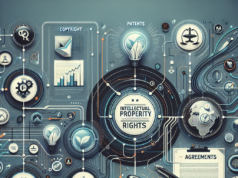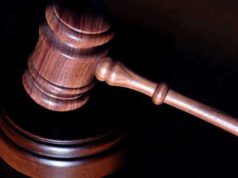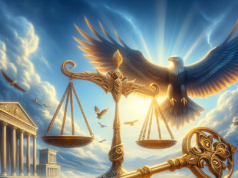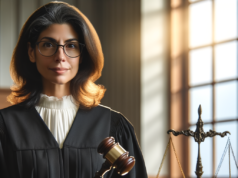Table of Contents

Gitlow v. New York: The Landmark Case that Redefined Free Speech in America
Introduction
In the annals of American legal history, certain cases stand out as pivotal moments that forever alter the landscape of constitutional rights. Gitlow v. New York is undeniably one of those cases. Decided in 1925, this Supreme Court case marked a significant turning point in the interpretation and application of the First Amendment’s protection of free speech. Through a contentious legal battle, Gitlow v. New York not only reaffirmed the fundamental importance of free expression but also set a precedent for the ongoing debate about the balance between national security and civil liberties. In this article, we will delve into the details of the case, its historical context, the legal arguments, the Supreme Court’s decision, and its enduring impact on the protection of free speech in the United States.
I. Historical Context
To understand the significance of Gitlow v. New York, it is crucial to consider the historical backdrop against which the case unfolded. The early 20th century was a tumultuous period marked by significant social and political upheaval, especially in the United States. The aftermath of World War I had left the nation grappling with the Red Scare, an era of intense anti-communist sentiment. Fueled by fears of radicalism and subversion, the government, led by the Department of Justice’s General Intelligence Division and the FBI, initiated widespread surveillance and suppression efforts targeting left-wing activists and organizations. This climate of fear and suspicion was the backdrop against which Benjamin Gitlow’s case would play out.
II. The Case of Benjamin Gitlow
Benjamin Gitlow was a prominent figure in the socialist movement during the early 20th century. Born in 1891, he became involved in socialist and communist activities, including writing for radical publications and advocating for socialist ideas. In 1919, he became a founding member of the Communist Party of the United States. In 1920, the New York State Legislature passed the Criminal Anarchy Act, which made it illegal to advocate for the violent overthrow of the government. Gitlow was arrested and charged under this law for distributing copies of a manifesto called “The Left Wing Manifesto” that called for the establishment of a proletarian dictatorship.
Gitlow’s trial and subsequent appeal set the stage for a pivotal legal battle over the scope of free speech protections under the First Amendment. At the heart of the case was the question of whether the state of New York had violated Gitlow’s constitutional rights by convicting him for advocating the overthrow of the government through force and violence.
III. Legal Arguments
The legal arguments in Gitlow v. New York centered on the interpretation of the First Amendment’s protection of free speech. Gitlow’s defense team argued that the state’s Criminal Anarchy Act violated the First Amendment’s protection of free speech and the press. They contended that Gitlow’s advocacy for socialism, even if it included the endorsement of force, did not constitute a “clear and present danger” to the government and, therefore, should be protected speech.
On the other hand, the state of New York argued that Gitlow’s actions posed a direct threat to the government and public order, justifying the restrictions imposed by the Criminal Anarchy Act. They believed that the state had a legitimate interest in preventing the advocacy of violent overthrow and that Gitlow’s actions fell outside the bounds of constitutionally protected speech.
IV. Supreme Court Decision
In a landmark decision, the Supreme Court of the United States handed down its ruling in Gitlow v. New York on June 8, 1925. The Court’s decision was a 7-2 split, with Justice Edward Sanford delivering the majority opinion.
The Court held that while the First Amendment’s protection of free speech applied to the states through the Due Process Clause of the Fourteenth Amendment, not all speech was protected. Justice Sanford articulated the “clear and present danger” test, stating that advocacy for the use of force or violence to overthrow the government could be restricted if it presented a clear and present danger to the government or society. In Gitlow’s case, the Court found that his actions, including distributing the manifesto advocating for the establishment of a proletarian dictatorship, did present such a danger and, therefore, could be restricted by the state.
However, the Court also recognized that not all forms of socialist or communist advocacy would necessarily constitute a clear and present danger. This ruling established a precedent that speech advocating for radical political change could be restricted if it posed a genuine threat but left the door open for other cases to refine and clarify the boundaries of protected speech.
V. Impact and Legacy
Gitlow v. New York had a profound and enduring impact on the interpretation of free speech rights in the United States. It established the “clear and present danger” test as a pivotal standard in First Amendment jurisprudence. This test would go on to shape numerous subsequent cases involving free speech and national security concerns.
Over the years, the Court continued to grapple with the balance between protecting free expression and safeguarding national security. Notable cases such as Schenck v. United States (1919), Whitney v. California (1927), and Brandenburg v. Ohio (1969) further refined the boundaries of protected speech and the “clear and present danger” test. In Brandenburg, the Court raised the bar for restricting speech, stating that speech advocating violence or lawlessness could only be restricted if it incited “imminent lawless action.”
Gitlow v. New York also played a role in the broader evolution of civil liberties during the 20th century. It marked a shift in the Court’s approach to free speech cases, recognizing that not all radical or controversial speech posed an immediate threat to the government or society. As a result, it contributed to a more robust protection of free expression in the United States.
Conclusion
Gitlow v. New York was a watershed moment in American legal history, one that fundamentally altered the interpretation and application of the First Amendment’s protection of free speech. While Benjamin Gitlow’s conviction was upheld, the case established a vital precedent that would guide the courts in future free speech cases. It reaffirmed the importance of free expression while acknowledging the government’s authority to restrict speech that posed a clear and present danger. Over the years, subsequent Supreme Court decisions would continue to shape the boundaries of protected speech in America, balancing the rights of individuals to express their views with the need to safeguard national security and public order. Gitlow v. New York stands as a testament to the enduring tension between liberty and security in a democratic society and the critical role of the judiciary in striking that delicate balance.
Introduction
The Gitlow v New York case is an important landmark decision by the United States Supreme Court that addressed the freedom of speech and the use of the First Amendment to apply to state actions. The case involved the conviction of a man named Benjamin Gitlow who was charged with criminal anarchy for publishing and circulating literature advocating the overthrow of the government. The Supreme Court’s decision in Gitlow v New York upheld Gitlow’s conviction but expanded the protection of free speech under the First Amendment to the states through the doctrine of incorporation.
Background
In 1919, Benjamin Gitlow was arrested and charged with criminal anarchy in the state of New York for publishing and distributing socialist literature that advocated for the overthrow of the government. Gitlow was convicted and sentenced to 20 years in prison. Gitlow appealed his conviction on the grounds that his right to free speech under the First Amendment had been violated.
The case eventually made its way to the Supreme Court, which agreed to hear the case to determine whether the conviction of Gitlow violated the First Amendment’s protection of freedom of speech.
The Court’s Decision
In a 7-2 decision, the Supreme Court held that the conviction of Gitlow did not violate the First Amendment’s protection of free speech. However, the Court also expanded the First Amendment’s protection of free speech to the states through the doctrine of incorporation.
The Court held that the First Amendment’s protection of free speech was a fundamental right that was essential to maintaining a democratic society. The Court also emphasized that the First Amendment’s protection of free speech applied to state actions through the Fourteenth Amendment’s due process clause, which incorporated the Bill of Rights to apply to the states.
Impact and Legacy
The Gitlow v New York decision had a significant impact on the interpretation and application of the First Amendment’s protection of free speech. The decision expanded the protection of free speech to the states through the doctrine of incorporation and emphasized the importance of the First Amendment’s protection of free speech in maintaining a democratic society.
The decision also established a precedent for the incorporation of other provisions of the Bill of Rights to apply to the states. The doctrine of incorporation has been used in subsequent cases to incorporate other provisions of the Bill of Rights, such as the Fourth Amendment’s protection against unreasonable searches and seizures, to apply to the states.
The Gitlow v New York decision remains an important part of American legal history and continues to shape the interpretation and application of the First Amendment’s protection of free speech.
Conclusion
The Gitlow v New York case was a landmark decision by the US Supreme Court that expanded the protection of free speech under the First Amendment to the states through the doctrine of incorporation. The decision upheld the conviction of Benjamin Gitlow but emphasized the importance of the First Amendment’s protection of free speech in maintaining a democratic society. The decision also established a precedent for the incorporation of other provisions of the Bill of Rights to apply to the states and remains an important part of American legal history.
Gitlow v. New York: The Background
The case of Gitlow v. New York took place in 1925. The case of Gitlow v. New York dealt with a number of Constitutional amendments—these are the rights guaranteed to American citizens. The case of Gitlow v. New York also dealt with state governments and specifically their ability to uphold these civil liberties expressed in the United States Constitution.
The case of Gitlow v. New York deals with a man named Benjamin Gitlow. This man was considered to be a Socialist and a potential anarchist. The United States government viewed this man as a threat because he believed in a type of government that the United States did not practice. Benjamin Gitlow was charged with violating “Anti Anarchist” laws because he spread magazines and newspapers which degraded the United States government and preached anti-government views.
Benjamin Gitlow was a socialist. He did not believe in how the United States governed its people. To spread his views, Gitlow published a number of papers and magazines which ultimately talked bad about the United States government. The Federal Government did not like Gitlow’s efforts. The government was afraid that Gitlow’s words would spark an uprising against the government.
Following this initial conviction, Benjamin Gitlow appealed, stating that his charges were in direct violation of his 1st and 14th amendment rights—these rights are guaranteed in the United States Constitution. This appeal is regarded as the Gitlow v. New York case.
Gitlow v. New York: The Case Profile
In Gitlow v. New York, Benjamin Gitlow was convicted of violating legislation that outlawed anti-government speech that is spread to the general public in newspapers, magazines, or other print. In response to these charges, Benjamin Gitlow appealed claiming the State of New York violated his constitutional rights. The case of Gitlow v. New York was heard in the United States Supreme Court. Gitlow v. New York was officially decided on June 8th of 1925.
Gitlow v. New York: The Verdict
The United States Supreme Court found that Benjamin Gitlow was guilty of his crimes; however, the court also found that the individual state governments were not allowed to deny their residents the civil and human rights expressed within the United States Constitution. The ruling of Gitlow v. New York basically said that the New York state government abused their powers, but Benjamin Gitlow was in fact guilty of his accused crimes.
The 1st Amendment of the United States Constitution ensures that all citizens of the country are awarded the right to free speech. This right also includes the freedom to express oneself so long as the individual’s actions are legal. Benjamin Gitlow, because he spread anti-government and hateful speech was not protected under the 1st amendment of the United States Constitution. If you need legal advice and assistance, contact New York lawyers.






















